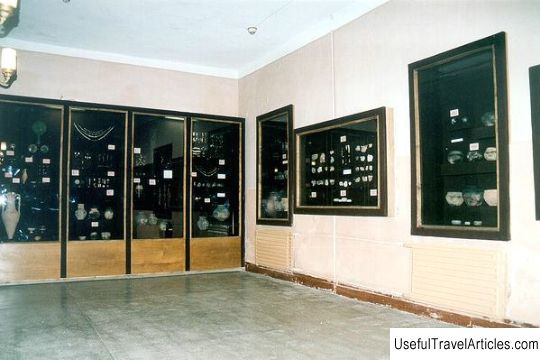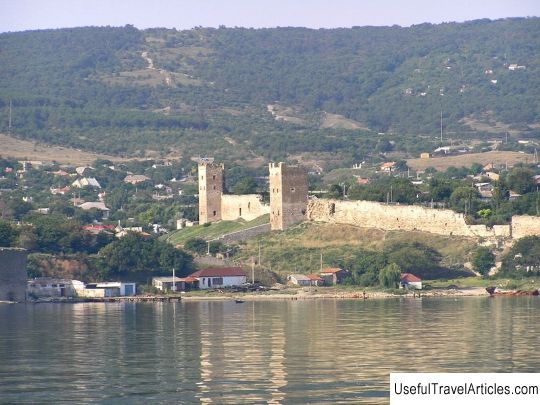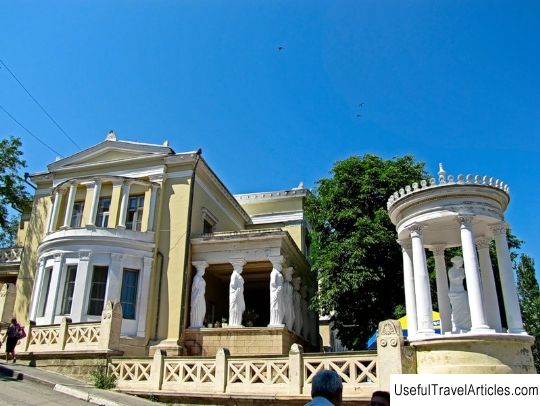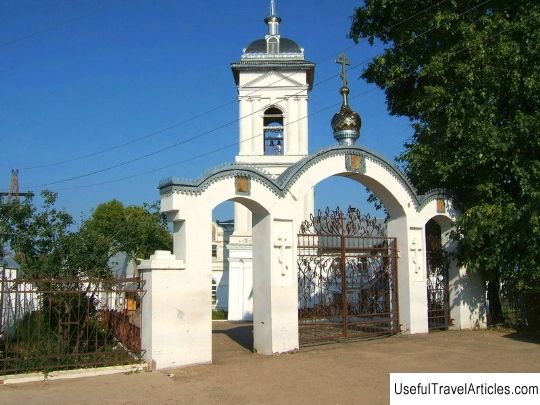Museum of money description and photo - Crimea: Feodosia
Rating: 7,9/10 (3905 votes) 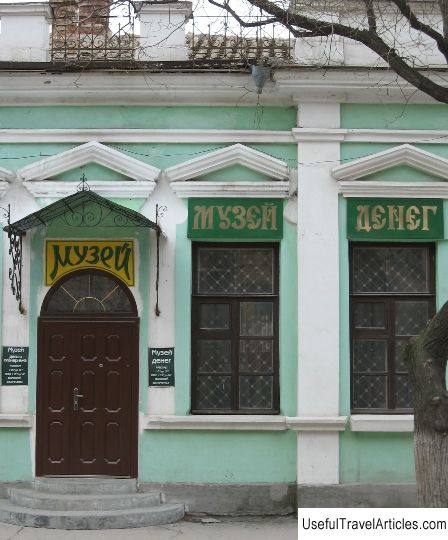
Museum of money description and photos - Crimea: Feodosia. Detailed information about the attraction. Description, photos and a map showing the nearest significant objects. Photo and descriptionThe Museum of Money, which is located in Feodosia, was officially born on July 15, 2003. Its opening took place on August 22, 2003. The work of this museum & nbsp; aimed at studying the coinage that arose in Feodosia. An equally important role is assigned to the popularization of the coin business, since Feodosia is the leader among the cities of Ukraine in terms of the number of periods when money was issued. The number of periods for issuing money is twelve. On July 31, 2005, in the Museum of Money in Feodosia, a grand opening of the "safe room" was made. At the opening of the Museum of Money, ancient Theodosian coins were presented, which are its pride. There are 16 of them in the museum's collection, while in the leading numismatic museums of the world there are units of coins that were issued during the time of ancient Feodosia. All coins differ in type and denomination. Some of the coins are unique, and their residence is only in the Feodosia Museum of Money. The main task of the Museum of Money is to popularize the history of the creation and circulation of money. Museum workers are faced with the task of providing effective assistance to people who collect money. These are numismatists and bonists. The museum collection is represented by several departments. The first of them displays a collection of coins that were issued in the city of Feodosia in the 5-4 centuries BC. Also here are coins circulated in the Golden Horde, which were minted in the Cafe from the fourteenth to the fifteenth century AD. Here you can also get acquainted with the coins of the Genoese-Tatar periods, from 1396 to 1475. Coins will interest you, which were minted at the old mint. This is a period of dependence on Turkey. They were minted according to the Turkish model. The following coins on display, called the coins of Khan Shahin-Giray, were minted at the new court, according to the Russian weight standard, in the periods from 1781 to 1783. It also contains coins that were minted at the Tauride Court for coins in the period from 1787 to 1788. The second section contains a collection of coins from the period of the Bosporus kingdom, from the 4th century BC to the 3rd century ad. There are also issues of money by various states and rulers. All this money circulated in Crimea and in the Feodosia region until the time when the peninsula joined Russia. The third section presents a collection of money from other countries, which have been and are on the territory of Ukraine lately. The fourth section displays a collection of money from Ukraine, from Kievan Rus to our time. Here are the issues of money of the Tmutarakan principality, post-revolutionary money that circulated in Ukraine from 1918 to 1920, money of the Reichskommissariat of Ukraine, the issue of which was in 1942, as well as all anniversary and everyday banknotes and coins recently in Ukraine. The fifth section contains modern money from 200 countries of the world. The sixth section has placed exhibits that tell about the history of the origin of money and its evolution. The Museum of Money has a library with literature on bonistics and numismatics, as well as specialized publications for collecting various banknotes.      We also recommend reading Narzan gallery description and photos - Russia - Caucasus: Kislovodsk Topic: Museum of money description and photo - Crimea: Feodosia. |
